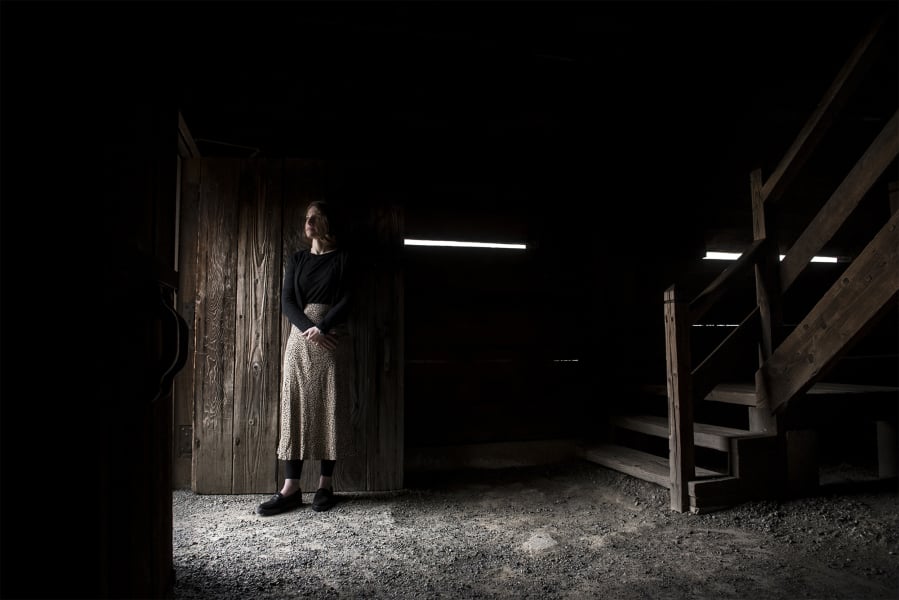Clearman searched for the first Fort Vancouver for her graduate thesis toward a master’s degree in archaeology. Her thesis adviser is Doug Wilson, a National Park Service archaeologist and adjunct associate professor at Portland State.
“Did we find the first Fort Vancouver?” Clearman asked at the end of her first presentation. “Well, Doug and I think we did, at least the general location.”
Historical records are sketchy, except for references that the first Fort Vancouver was built on a bluff overlooking the Columbia River. Hudson’s Bay Company’s Governor George Simpson recorded in his journal that he christened the first fort by breaking a bottle of rum over its flagstaff on March 19, 1825.
Fort managers found it a difficult location since all supplies had to be hauled up a steep bluff. After four years, they moved the fur-trading post to a more convenient location slightly more than a mile to the west, to where the reconstructed Fort Vancouver stands today.
Although thousands of artifacts have been recovered from the reconstructed Fort Vancouver, little has been found to indicate where the first Fort Vancouver was built.
A sign was erected in 1925 along the west side of the Washington School for the Deaf indicating the first Fort Vancouver was built there, but little evidence has been uncovered to support that location.
Clearman’s project included historical research, archaeological excavations and residential interviews to try to establish where the Hudson’s Bay Company built the first Fort Vancouver.
With the cooperation of 11 property owners in the Edgewood Park and Hudson’s Bay neighborhoods, Clearman started excavations in July 2018. Over five months, she dug about 30 holes, each 16 inches in diameter, to an average depth of 20 inches. Her deepest hole was about 33 inches.
Clearman found assorted artifacts, including ceramic dish pieces, glass shards and a tiny orange bead, many of which were crafted after the first Fort Vancouver had been abandoned.
During her presentation, Clearman emphasized the interviews she had done with longtime residents in the area.
Clearman said she talked with an Edgewood Park resident who remembers his father excavating for a basement when he was a child. The father consulted with Louis Caywood, a National Park Service archaeologist who uncovered all four corners of the second Fort Vancouver’s stockade in the late 1940s. Caywood was able to find artifacts at the location that dated back to 1825, she said.
It was a combination of information that led her to identify the first fort’s general location.
“There was not a key artifact,” she said. “It was all the evidence put together.”
Many of the artifacts recovered at the reconstructed fort were found in privies, or outdoor toilets that did double duty as garbage dumps in the 19th century.
“Archaeologists love privies because that’s where you find all the stuff,” Clearman said.
The first Fort Vancouver is believed to have been small. An unnamed Hudson’s Bay Company employee, in an undated document, described the first fort as measuring a scant 150 feet by 250 feet.
“That adds another challenge to the project,” Clearman said.
Clearman’s presentation featured only photos of what she uncovered. Under Washington law, Clearman could proceed with an archaeological survey without obtaining a permit, provided that she reburied all artifacts she found.
Clearman has started writing her thesis and has submitted three chapters to Wilson for his review. She still has more chapters to write, along with appendices to complete, and expects to complete her paper in May.
Wilson, in his introductory comments, praised Clearman as an “exceptional graduate student.”
“Amy has done the equivalent of two master’s theses,” he said. “I finally had to tell her to stop working.”
Clearman expects to post a link to her finished thesis on her website, FirstFortVancouver.com, that also includes a blog about her project.




